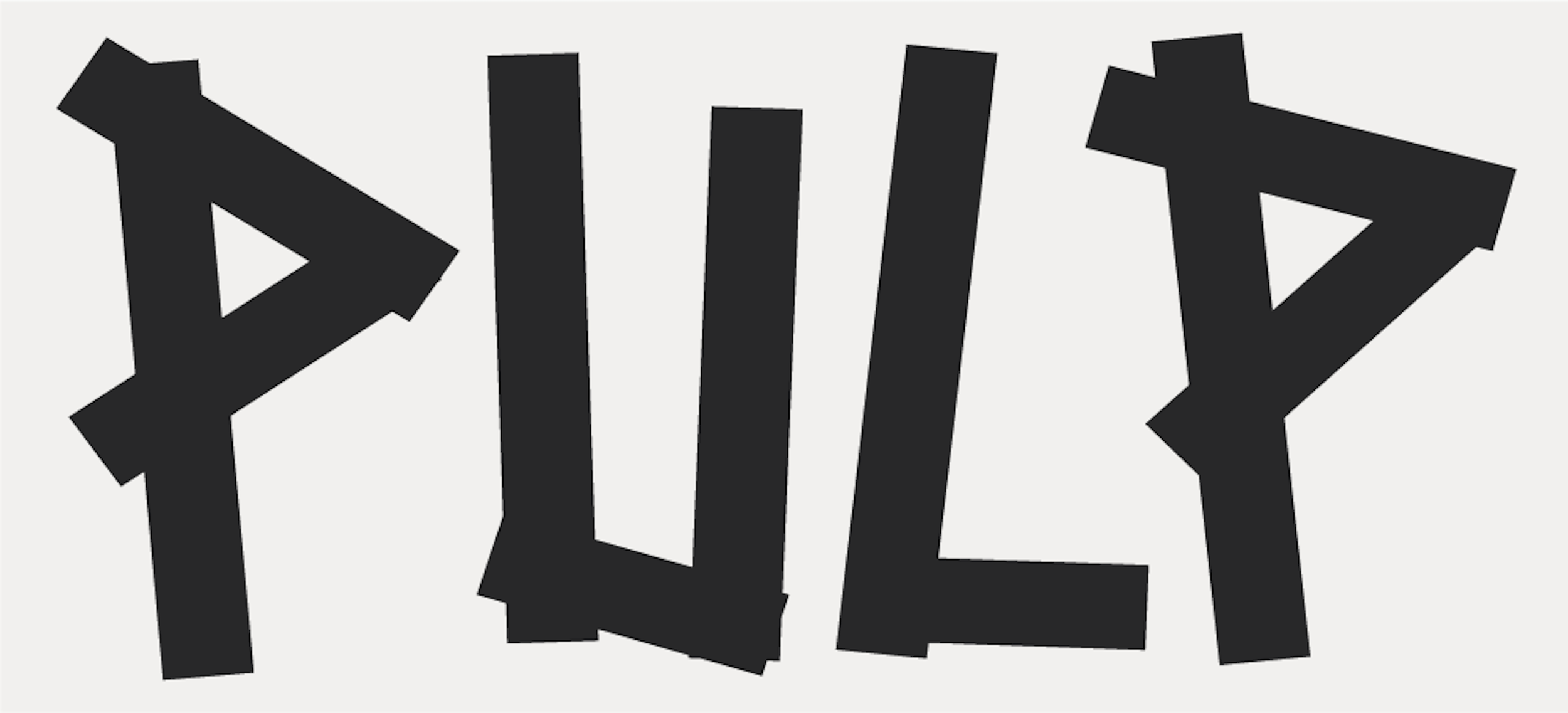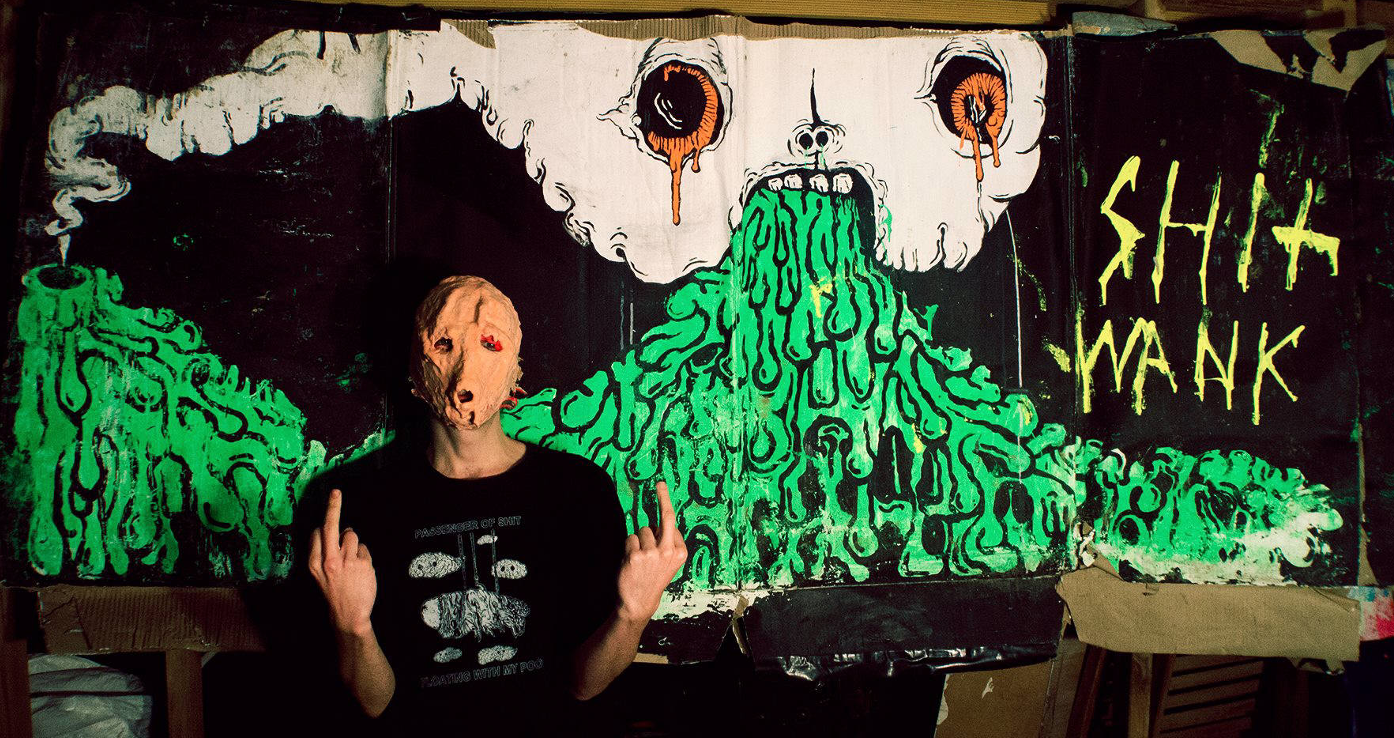Inside the experimental hardcore scene: Antifascist haven, Nazi paradise or simple absurdity?
Hardcore, artcore, heartcore. Robbie Mason interrogates the surreptitious takeover of gabber culture by women, queers, enbies and other decibel-addled agitators.
Poster for an Australian experimental hardcore doof. Image courtesy: Noistruct
Recently I discovered Pyongyang Hardcore Resistance (PHR), a group who, from the late 00s to early 10s, trampled over samples of traditional Korean music with aggressive speedcore kicks and a fistful of amen breaks. Apparently, PHR were smuggling Western music into North Korea and producing from within the pariah nation. In 2012, having never performed publicly, the group revealed it was all a hoax.
When I post in a breakcore Facebook group chasing leads on the real identity of PHR, I am rebuffed and ridiculed. A fake/troll profile tells me that “the truth it out there” and to “wait for reunification”. I am hardly shocked.
See, many experimental hardcore artists prefer to remain underground. Certain artists have refused interview requests when I have reached out to them. One cited prior media misrepresentation of their work as a reason. Contrary to the modern incarnation of dance music, which involves the passive consumption of a rave-spectacle, superstar DJs performing in packed-out arenas and Spotify/Instagram analytics directing careers, these artists eschew fame.
As a music journalist, I feel like I am skirting the edges of hallowed turf, trespassing. It’s like someone has nailed a “Keep Out” sign to their front door and padlocked the chain-link gate around their property. I stand there camera in hand, a bazooka-sized long-focus lens perched between the gaps in the chain fence.
Inside, hidden away in this niche corner of the music industry, are speedcore, terrorcore and breakcore – electronic music genres, usually over 200 beats-per-minute (BPM), which fuse the gothic aesthetics of death metal and the occasional guitar riff with schizophrenic, intensely fast beats. While these music genres will probably never enter the mainstream – they are far too extreme – new artists are encroaching on their territory.
If you’ve tuned into the radio during the COVID-19 pandemic, you may have noticed subtle changes in your listening experience – an increased heart rate, for example, or the invisible hand tugging at your arm, pushing you towards your bedroom dancefloor, tempting you. According to one BBC report, pop music in 2020 contained the highest BPM rate since 2009. A new platoon of avant-garde artists such as 100 Gecs and SOPHIE have infiltrated pop, introducing global audiences to a whirlwind of contorted beats styled “hyperpop”. Meanwhile, in the last three years, as is well-documented in the music press, hardcore techno or “gabber”, which proliferated in the 90s, has re-emerged within dance music communities.
Put another way: weirder and faster music is becoming mainstream.
Australian breakcore artist Noistruct, who runs ENDE records, remains guarded about new elements entering the experimental hardcore community. He describes breakcore specifically as an “anti-rave thing”. The “whole concept of breakcore” was to “fuck with the Nazis”.
In the late 90s, as techno became less revolutionary, football hooligans and bomber-jacket wearing skinheads with fascist and misogynistic inklings overran the extreme end of the techno continuum. This music, styled “gabber”, was a white, working class Dutch subculture. As the 90s waned, gabber traded the relentless drive of hardcore for radio-friendly drops, cheesy samples and nursery-rhyme treble. This was dance music to fill arenas.
Gabber – from which speedcore stems – became the centre of moral panic in the late 90s, after a Daily Star article, titled ‘Nazi Gabber Hell’, proclaimed that gabber communities were hotbeds for far-right extremism. To some extent, it was true. Toxic masculinity was rife. No matter that gabber had antiracist, antifascist roots; the popular image of skinhead-gabber was thereafter cemented.
While the 4/4 kick drum does not entirely disappear in breakcore, Noistruct suggests that the idea behind breakcore is to “fuck with the tempo and fuck with the formulas, add more distorted breaks and chop it around with various samples or extreme noise”. In the early 2000s, breakcore and speedcore artists began to use breaks and intensely fast kicks to slice, dice and swallow pop music, regurgitating it as a poisonous, mutant form of cartoonish popmash breakcore, which mocked soul-sucking, capitalist hyperconsumerism. This style has never died away.
Both Noistruct and Sönke Moehl, a Hamburg-based experimental hardcore producer (alias Low Entropy) and owner of Doomcore Recordings, perceive experimental hardcore as an extension and continuation of 80s punk culture. Noistruct labels experimental hardcore heads as “refugees from the metal and punk scenes”.
Low Entropy fondly recollects a Hamburg party at the squat Rote Flora with hardcore in the basement and punk upstairs. “Both audiences merged with each other.”
In Europe, Digital Hardcore Recordings, established in 1994, platformed hybrid punk-gabber acts such as Atari Teenage Riot (ATR) and Ec8or. With lo-fi distortion omnipotent, guitar riffs careering through songs like wrecking balls and hardcore kicks steamrolling audiences with an aural onslaught, their lyrics – shouted rather than sung – demanded revolution and worker mobilisation. Tracks like ATR’s Speed, Revolution Action and Kids Are United! read like anarchist manifestos. Low Entropy describes watching the music video for Speed on MTV as a “life changing” moment. “It was like I was hit over my head with a club.”
The ethos of Digital Hardcore Recordings carried over into not just breakcore but speedcore as well. Horror themes pervade speedcore album art. Images of pentagrams, skulls, Medieval knights, barbed wire and flames, combined with the popular perception of the speedcore DJ as a white male with a shaved head, sometimes bring the aesthetics of speedcore close to occult fascism and apocalyptic warfare. However, as within hardcore punk and football hooliganism – subcultures with which hardcore techno sometimes collides – far left politics has a firm foothold within speedcore. Low Entropy recollects that “anti Nazi logos and symbols were a common sight on speedcore party flyers in Germany”. Numerous speedcore artists have fought against fascism, building trenches and placing tank barriers via releases such as DJ Freak and Noize Creator’s 1998 EP The Anti Nazi Pack.
While Digital Hardcore Recordings releases were overtly ideological – “more diatribes and ranting” than subtle critique (Noistruct’s words) – Australian releases from Bloody Fist Records, System Corrupt, Night Terror Recordings and ULTRAVIRUS, among others, have a massive dollop of Australian sarcasm. The 1994 Nasenbluten track What Ye Deserve (Bloody Fist Records) begins with a voice sample of someone requesting the DJ play a song, followed by someone bellowing “oh fuck off!”
According to Noistruct, in lieu of hell-raising samples, frowning punters and uniformity in crowds, there is a “theatrical side” to experimental hardcore, and it’s not unheard of for some breakcore artists to perform naked on stage.
To drive away the staunchly hetero crowd of mainstream hardcore, members of the Sydney breakcore label System Corrupt, incorporated subversive, homoerotic collages into their rave flyers and visuals at events. Passenger Of Shit, meanwhile, an iconic breakcore and speedcore producer from the Blue Mountains, creates music and art that blends absurdist themes with unhinged and gory visual accompaniments.
Australian breakcore artist Passenger of Shit in front of his own artwork. Image courtesy: press kit available at https://www.passengerofshit.com/.
Like many in Australia’s prosperous experimental hardcore scene, Noistruct has a taste for the wry. Describing the moment the cops rocked up at a Halloween party in a decrepit war bunker by System Corrupt, Noistruct drops an f-bomb with the insouciance and delight of someone whose top hobby is, I imagine, yelling at cops and parking rangers.
It’s 2003 and the crowd is all dressed up for Halloween. Think ghoul masks and chains; somewhere in between a demon kink party and cabaret. There are fire-twirlers and cow skulls as décor. “They [the cops] didn’t shut it down. They just fucking left. It was like they got frightened… They weren’t sure if it was an underground hardcore party or a cult.”
Poster for the 2003 System Corrupt Halloween rave. Image courtesy: Noistruct.
Freedom of self-expression within these spaces has fostered inclusivity. Low Entropy says that, regarding gender and sexuality, the experimental hardcore community is “far ahead” of many other music scenes.
This openness as spread today into hardcore genres which straddle the line between experimental hardcore and mainstream hardcore. Spearheaded by trans and female artists including Kilbourne, Luuli, Somniac One and PTwiggs, this ‘new school’ hard dance movement is queer-ing and feminising hardcore culture.
Over Zoom, Ashe Kilbourne, a New York-based producer under the name Kilbourne, explains that the harshness of her music – everything from terrorcore to metal remixes – reflects her way of processing gender dysphoria and transphobia. In the music’s abrasiveness, she finds “catharsis”, and politics is always within shouting distance. Over a beat like a war drum and jarring background static, Kilbourne’s track with Estoc Burning Flag begins with the words: “the United States does not exist.”
In recent years, Kilbourne has performed alongside racially and gender diverse DJs and bands for the queer party SPINOFF GABBER and for the New York rave collective Melting Point. Far from perpetuating the performative politics and virtue signalling increasingly prevalent in rave communities, Melting Point have provided material support for marginalised communities, raising over $22000 (US) for Al Otro Lado, a non-profit organisation helping Latino asylum seekers. Kilbourne cites Melting Point as one of her all-time favourite events, stating that the rave series is a welcome “step away from the indifference of nightlife”.
However, the hardcore resurgence, which began circa 2016, has brought a more diverse crowd, not simply a queer-friendly crowd. Cue the drug-fuelled partygoers.
Noistruct dismisses the British festival Bangface as an “MDMA kindergarten”. In his eyes, the rise of social media and certain web labels has depoliticised breakcore, turning it into a joke memecore genre with little deeper meaning. Breakcore is now something “to click on, read about, glance at and windowshop”.
Indeed, for some, experimental hardcore will always be spaceship sounds to entertain dancefloors; a soft sonic blanket for drug-addled minds. I sense that some producers would prefer to be left alone than analysed by a pseudo-intellectual music critic because maybe there isn’t any deeper meaning. As the description reads on the Soundcloud account of Earwax Jam, an Australian breakcore producer: “this is a soundtrack to drug abuse.”
There are mutterings of right-wing sympathisers, normies and apolitical partyholics entering the scene after 2016. But the old-school heads, such as Noistruct and Low Entropy, and the new generation like Kilbourne do not lose sight of themselves in the cacophony of eclectic beats and the absurdity; rather, they find themselves. These artists strive to maintain the countercultural credit of one of the few remaining subgenres of electronic music which has spurned media attention and sustained its pariah status.
In contrast to recent investigations into fascism within Australia’s metal scene – PhD student Ben Hillier asserted in an interview with Blunt Magazine in February this year that researchers have “found a lot of fascist Australian metal bands and not very many anti-fascist ones” – I have found almost no indication of any far-right presence within speedcore, terrorcore or breakcore communities.
Both Low Entropy and Noistruct suggest that the political radicalism of experimental hardcore plateaued in the late 00s and 10s, but remain optimistic about the future of this music. Noistruct maintains that experimental hardcore is “still vehemently antifascist and anarchist” and “unwilling to bend to current soft, weasel words excusing Nazi sympathising, Tory conservativism and fascism.”
Hardcore balances precariously on a tightrope between three seemingly contradictory phenomena – the sheer silliness and irony of postmodern pistache, white nationalist aesthetics and radical left-wing politics. As female and queer producers and fans begin to take over bigger hardcore events – take Melting Point’s thousands-strong multi-stage raves as an example – it seems clear which will triumph.
Increased attention may be a blessing in disguise.



